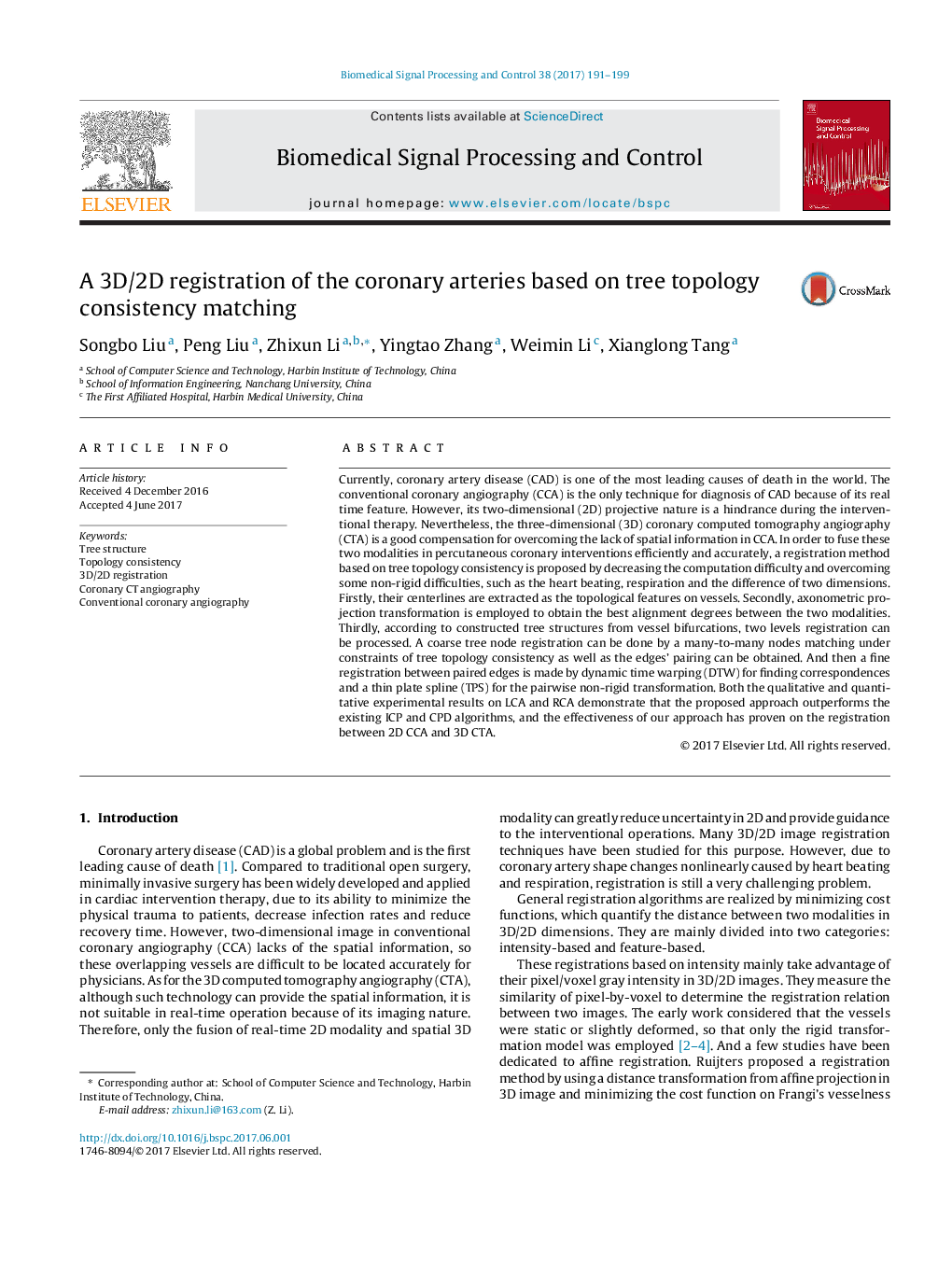| Article ID | Journal | Published Year | Pages | File Type |
|---|---|---|---|---|
| 4973440 | Biomedical Signal Processing and Control | 2017 | 9 Pages |
Abstract
Currently, coronary artery disease (CAD) is one of the most leading causes of death in the world. The conventional coronary angiography (CCA) is the only technique for diagnosis of CAD because of its real time feature. However, its two-dimensional (2D) projective nature is a hindrance during the interventional therapy. Nevertheless, the three-dimensional (3D) coronary computed tomography angiography (CTA) is a good compensation for overcoming the lack of spatial information in CCA. In order to fuse these two modalities in percutaneous coronary interventions efficiently and accurately, a registration method based on tree topology consistency is proposed by decreasing the computation difficulty and overcoming some non-rigid difficulties, such as the heart beating, respiration and the difference of two dimensions. Firstly, their centerlines are extracted as the topological features on vessels. Secondly, axonometric projection transformation is employed to obtain the best alignment degrees between the two modalities. Thirdly, according to constructed tree structures from vessel bifurcations, two levels registration can be processed. A coarse tree node registration can be done by a many-to-many nodes matching under constraints of tree topology consistency as well as the edges' pairing can be obtained. And then a fine registration between paired edges is made by dynamic time warping (DTW) for finding correspondences and a thin plate spline (TPS) for the pairwise non-rigid transformation. Both the qualitative and quantitative experimental results on LCA and RCA demonstrate that the proposed approach outperforms the existing ICP and CPD algorithms, and the effectiveness of our approach has proven on the registration between 2D CCA and 3D CTA.
Related Topics
Physical Sciences and Engineering
Computer Science
Signal Processing
Authors
Songbo Liu, Peng Liu, Zhixun Li, Yingtao Zhang, Weimin Li, Xianglong Tang,
